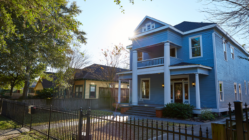
Whether you are an investor considering your next real estate move or a prospective home buyer deciding on the best city to live in, understanding the subtleties of local real estate markets is crucial. Dallas and Austin, two of Texas’s largest cities, offer unique opportunities and challenges to real estate investors and homebuyers. In this article, we will delve into an in-depth market analysis of Dallas and Austin, and discuss the factors that impact real estate investment in these cities.
Market Analysis: Dallas Real Estate
Dallas, one of the fastest-growing cities in the U.S., boasts a robust real estate market characterized by an ever-increasing demand for housing. The city’s flourishing job market, affordable housing options, and attractive rental returns are compelling reasons for both investors and buyers.
The city also witnessed a significant surge in real estate prices over the past years, partly due to population growth and partly due to a strong local economy. Dallas is home to several Fortune 500 companies, contributing to its strong job market, thereby attracting job-seekers and enhancing housing demand.
Often celebrated as the “Live Music Capital of the World” and a flourishing tech hub, Austin stands as a beacon of cultural diversity and economic dynamism in the heart of Texas. The city’s robust growth, backed by its burgeoning tech industry, superior lifestyle amenities, and a vibrant, youthful population, paints a compelling picture for both homebuyers and real estate investors. As we delve into the Austin real estate market with our real estate expert Victor Steffen, who specializes in investment properties, we’ll uncover how these characteristics shape its property landscape, influencing property values, demand patterns, and investment returns.
Although there was a temporary slowdown in the Dallas real estate market due to the global pandemic, it quickly rebounded. Even with the recent surge in housing prices, Dallas still offers affordable housing compared to the national average. This, coupled with the city’s promising rental market, has made Dallas a hotspot for real estate investment.
Market Analysis: Austin Real Estate
Austin, known for its vibrant culture and booming tech industry, is another rapidly growing city in Texas. The city’s real estate market mirrors its economic development, featuring a continuous uptrend in property values.
Tech companies’ expansion in Austin has led to an influx of professionals seeking housing, subsequently driving up real estate prices. The city’s home prices have been on a steady upward trajectory, with the demand outpacing supply. High demand, coupled with limited inventory, has led to a highly competitive market with homes selling faster than the national average.
Despite the high property prices, Austin’s real estate market continues to attract investors, largely due to its thriving economy and strong rental market. The city’s robust job growth and popularity among millennials make it an ideal place for long-term property investment.
What Factors Affect Real Estate Investment In Dallas And Austin?
When it comes to investing in real estate, several factors come into play. In Dallas and Austin, these factors are closely tied to the cities’ economic and demographic dynamics.
Economic Factors
Both Dallas and Austin have strong local economies, underpinned by diverse industries. Dallas, being a corporate hub, attracts a wide array of businesses, whereas Austin, often dubbed “Silicon Hills,” is a popular destination for tech companies. These thriving economies lead to job growth, driving population influx, and boosting housing demand.
Demographic Factors
Dallas and Austin are popular among young professionals and families due to the cities’ employment opportunities, education facilities, and vibrant culture. These demographic factors contribute to a steady demand for both rental and residential properties.
Market Dynamics
Real estate markets in Dallas and Austin are largely influenced by supply and demand dynamics. While Dallas has relatively more affordable housing options, Austin struggles with limited housing inventory, leading to higher prices.
Regulatory Factors
Local policies and regulations can significantly impact real estate markets. For instance, Texas’s friendly business climate and lack of state income tax make it an attractive location for companies and residents alike.
Conclusion
In conclusion, Dallas and Austin offer unique opportunities for real estate investment. Dallas, with its affordability and robust rental market, is ideal for investors seeking steady cash flow. On the other hand, Austin, with its high property values and strong job market, offers an opportunity for long-term capital appreciation. Before making an investment decision, consider the cities’ economic projections, real estate market trends, and your personal financial goals. Both cities have solid potential for growth, making them prime real estate markets in the U.S.
If you’re interested in investment property financing, our team is on standby to assist you.





















